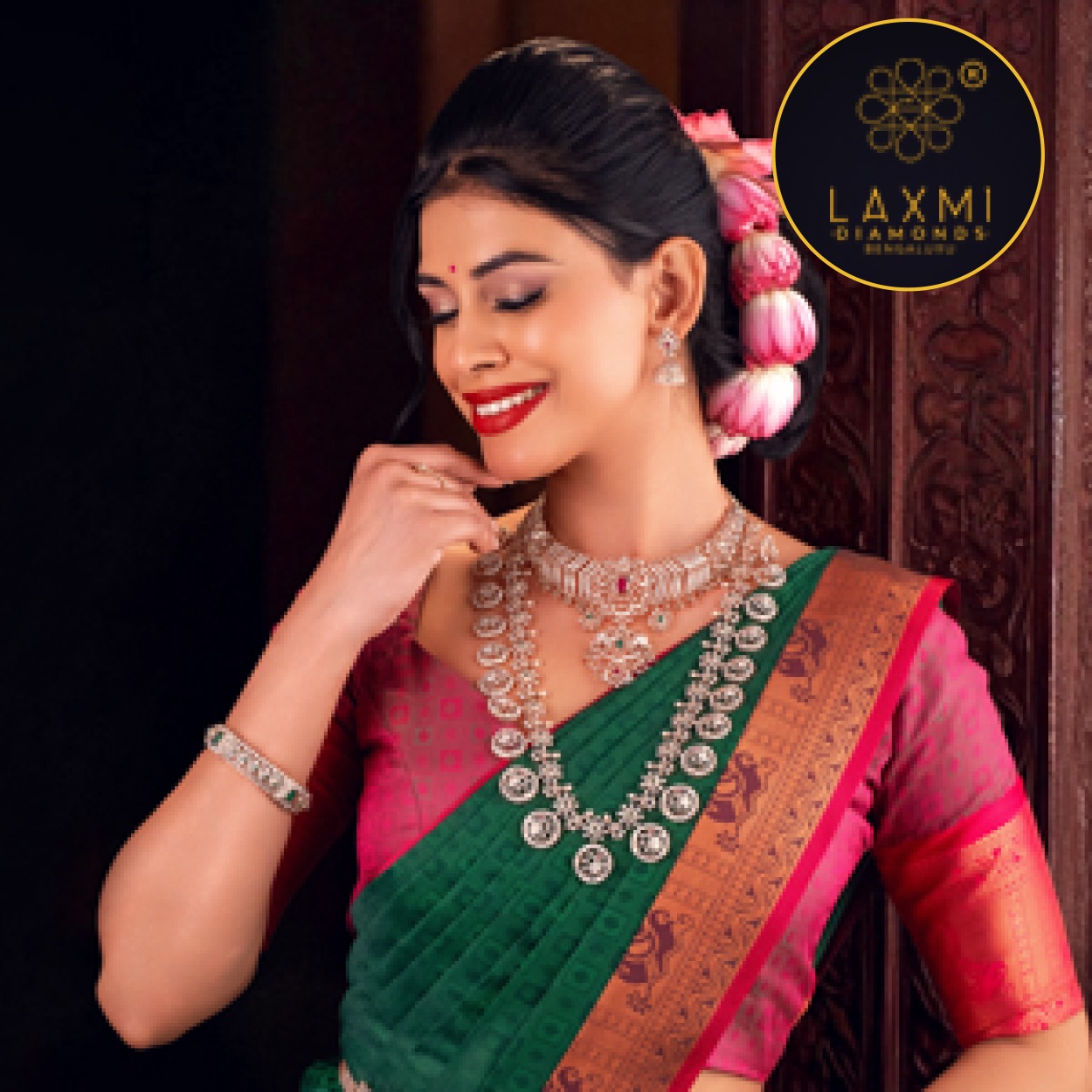TechBuzz
Additive Manufacturing in Jewellery: How 3D Printing is Shaping the Future
Discover how additive manufacturing (3D printing) is revolutionizing the jewellery industry with rapid prototyping, precision design, and sustainable production techniques.

What is Additive Manufacturing?
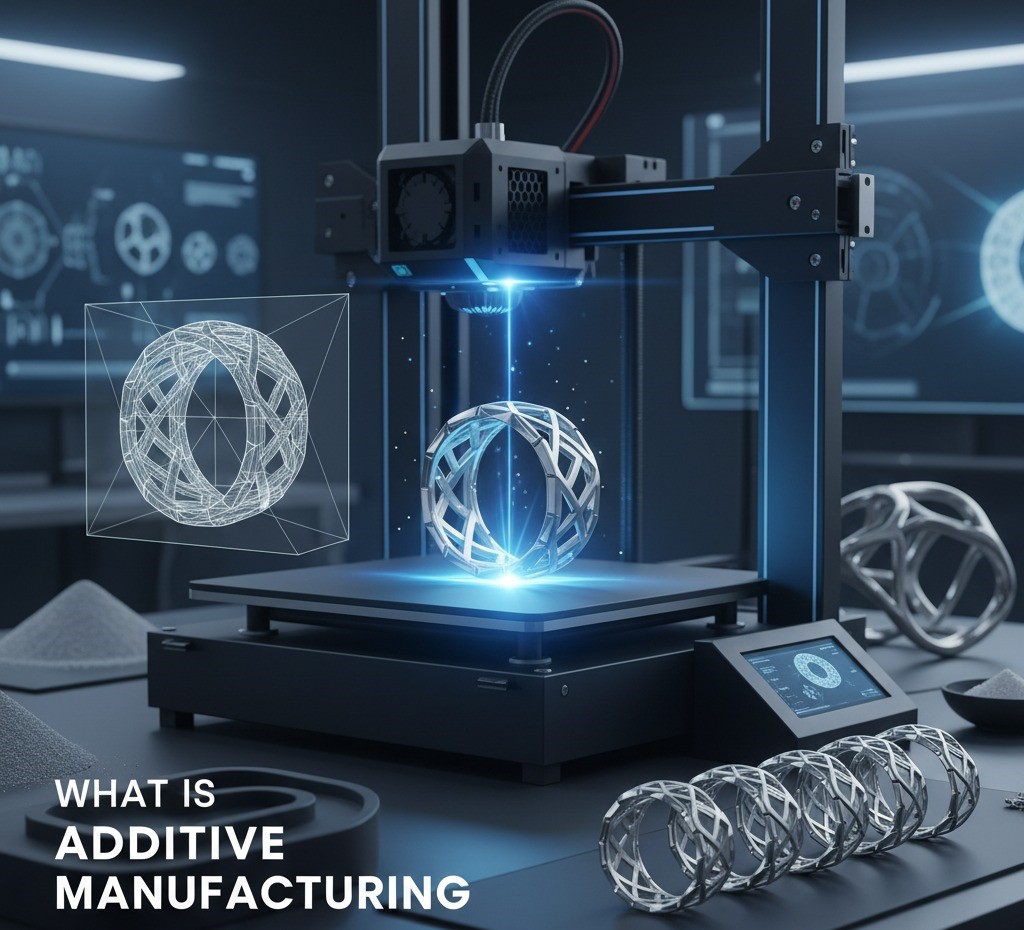
Additive manufacturing (AM), commonly known as 3D printing, is the process of building objects layer by layer directly from a 3D CAD model. Unlike traditional methods, AM doesn’t require cutting tools or molds, enabling designers and manufacturers to create intricate, customized, and functional parts efficiently.
Applications in Jewellery and Beyond
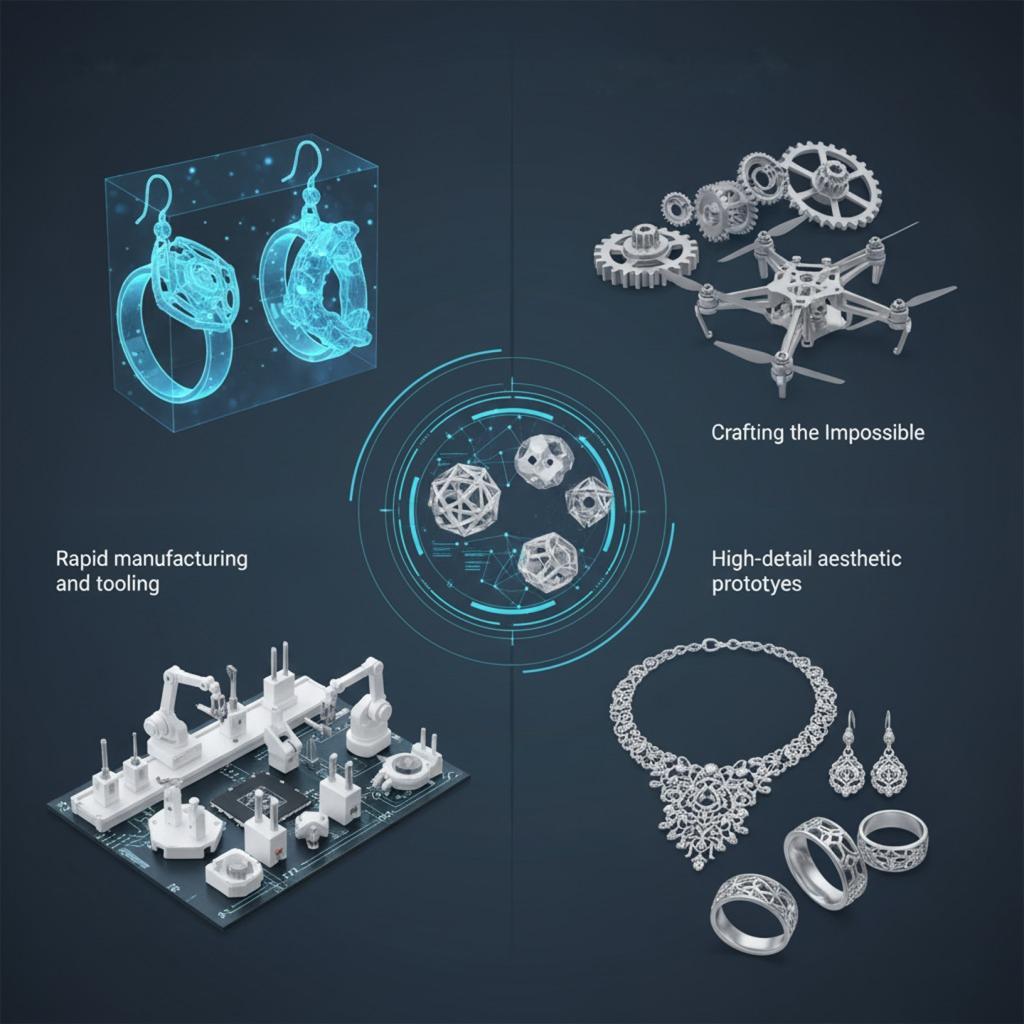
Additive manufacturing is widely used for:
- Rapid prototyping and concept models
- Production of functional parts and spare components
- Rapid manufacturing and tooling
- High-detail aesthetic prototypes
In jewellery, AM allows designers to craft complex motifs and precise structures that are otherwise impossible with traditional methods.
Popular Additive Manufacturing Processes

- Stereolithography (SLA) – Uses UV light to cure photopolymer resin, producing highly detailed, smooth-finish prototypes.
- Selective Laser Sintering (SLS) – Sintered thermoplastic powders create durable, functional parts with complex geometries.
- Multi Jet Fusion (MJF) – Offers fast, accurate, and cost-effective production of functional parts using inkjet fusing agents.
- PolyJet Printing – Enables multi-material, multi-color parts with fine detail, ready for immediate use.
- Direct Metal Laser Sintering (DMLS) – Fuses metal powders like stainless steel, aluminum, and titanium for strong, precise, and lightweight components.
Materials Used in Additive Manufacturing
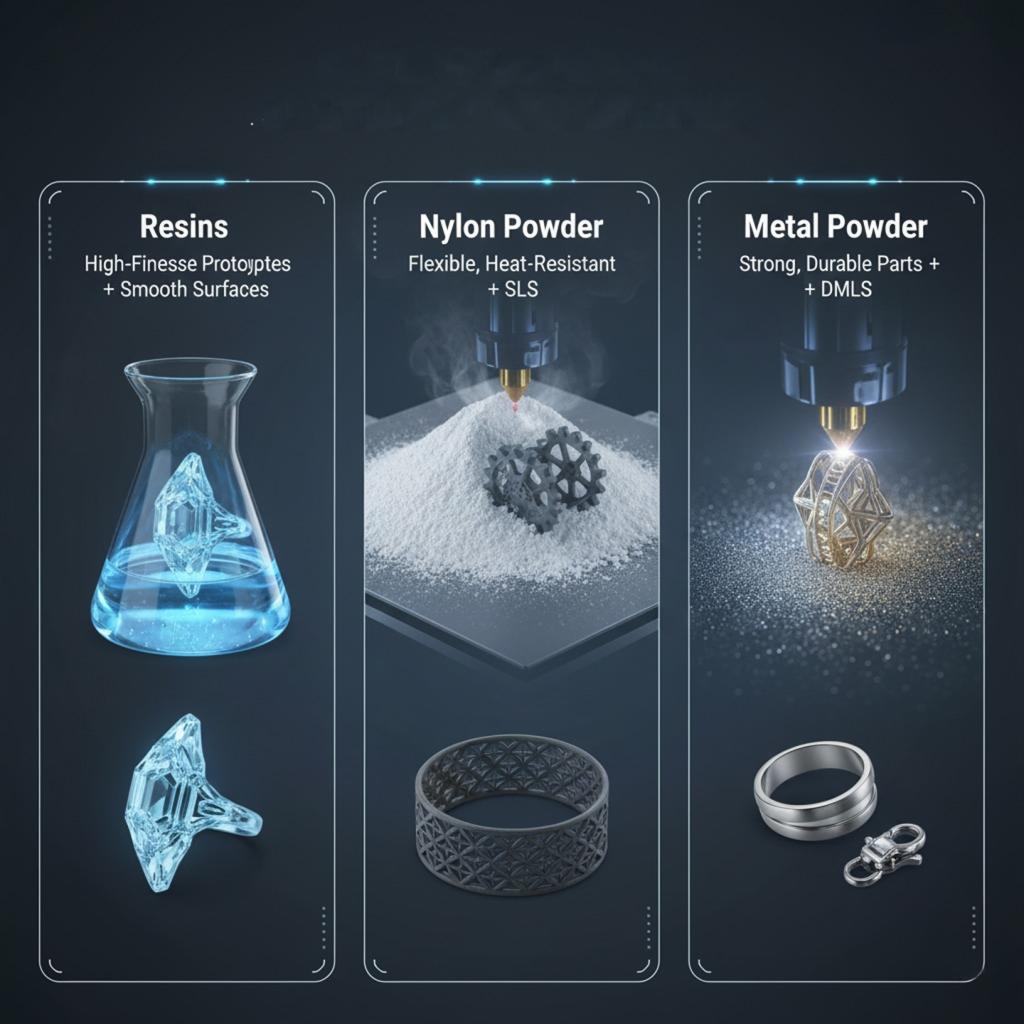
- Resins: High-finesse prototypes with smooth surfaces
- Nylon Powder: Flexible, heat-resistant, ideal for SLS
- Metal Powder: Strong and durable parts for DMLS applications
Why Additive Manufacturing is Transforming Jewellery
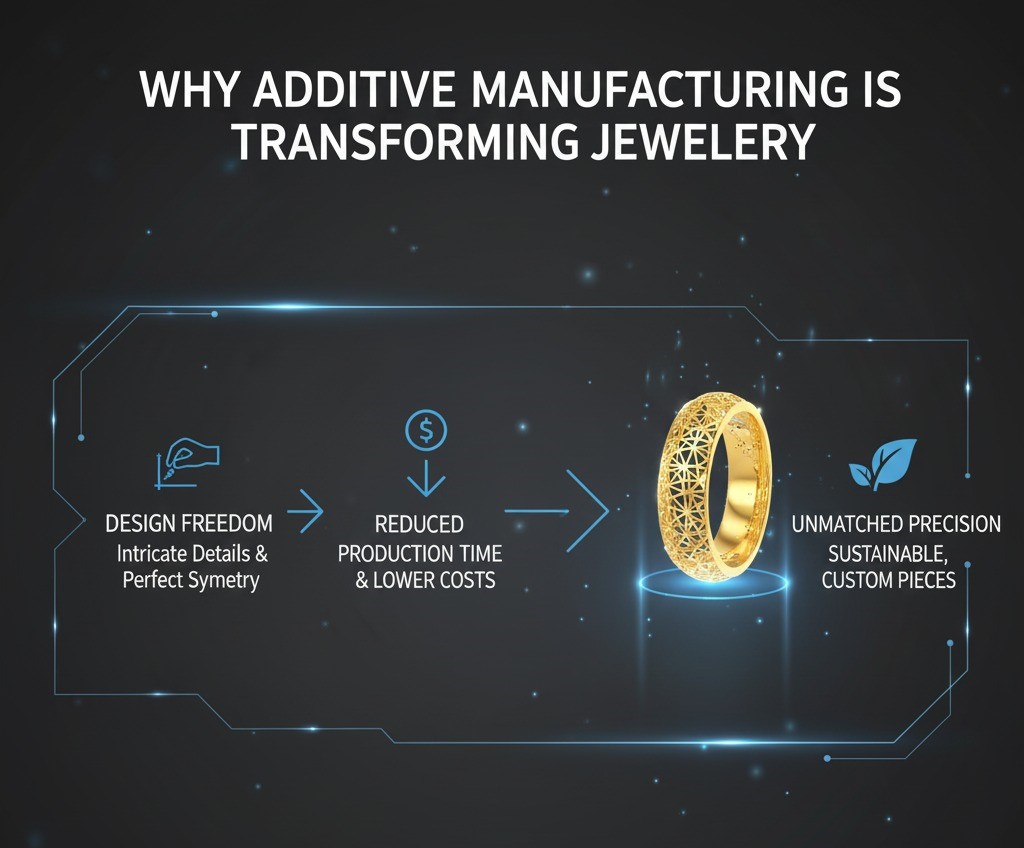
AM reduces production time, lowers costs, and enhances design freedom, allowing jewellery brands to innovate faster. Designers can experiment with intricate details, achieve perfect symmetry, and create custom, sustainable pieces with unmatched precision.
The Future of Jewellery and Manufacturing

Additive manufacturing is not just a tool—it’s a creative revolution. By combining digital design, precision engineering, and material innovation, AM is enabling the next generation of jewellery designers and manufacturers to dream bigger and create smarter.
TechBuzz
CAD Usage Among Indian Jewellery Manufacturers
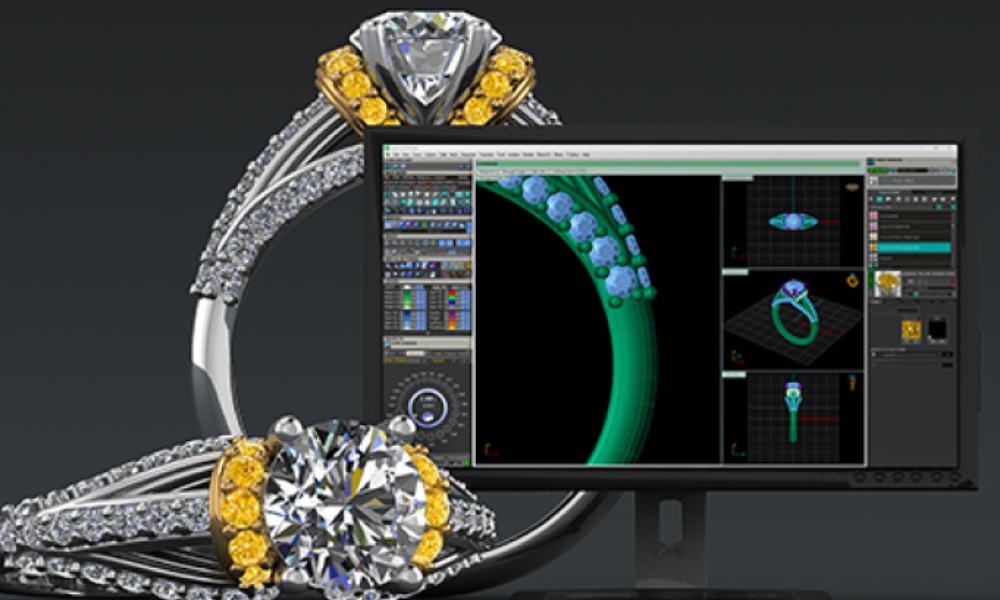
While there is no widely published recent study that gives a full quantitative breakdown of CAD adoption (in the style of “X% of manufacturers use CAD”) in India, several reports, articles and case-studies provide useful signals. Below are key findings, patterns, and gaps:
What the Data Shows
- Growing Use of CAD / CAM & Digital Tools
- Many manufacturers (especially medium to large exporters or those serving overseas markets) now use CAD software (e.g. MatrixGold, RhinoGold) as part of their design workflow.
- CAD is frequently combined with 3D printing or rapid prototyping for producing models before casting.
- Firms emphasise that CAD allows greater precision, fine detail, reduced waste of precious metal, and better finish.
- Variation by Firm Size, Export vs Domestic
- Larger, organised units / exporters are much more likely to invest in CAD/CAM, modern machinery, CNC, etc. Smaller artisanal workshops are slower to adopt.
- Some smaller design houses are using CAD for custom orders, or combining hand-craftsmanship with digital design tools to stay competitive.
- Manufacturing Landscape & Capacity
- The sector is still very fragmented: many small workshops, a large number of artisans / karigars, many informal units.
- Organised large-scale factories are increasing in number (from under 10% of units to around 15–20%), and such units are more likely to have capacity for CAD, CNC, modern casting, etc.
- Technology Levels and Process Adoption
- According to a cluster/technology mapping study (NCAER, 2019): among the “machine-made jewellery” segment, a non-trivial percentage of enterprises report using advanced tech for certain processes, including CAD designing as well as wax setting, laser welding, quality control etc.
- Many still rely on more “basic” or “average” technology for other parts of jewellery work, especially in semi-precious stones, traditional ornamentation, or handmade work.
- Software & Tools in Use
- Commonly mentioned design software in India include: MatrixGold, RhinoGold, Jewelry CAD Dream, ZBrush, AutoCAD, etc.
- Some manufacturers also report investing in 3D printers, CNC machines, laser machines, casting machines, etc.
-

 GlamBuzz6 days ago
GlamBuzz6 days agoKushals Fashion and Silver Jewellery shines bright with Sanya Malhotra as its Brand Ambassador in the North and Priyanka Mohan in the South
-

 BrandBuzz1 day ago
BrandBuzz1 day agoWhen your Love Speaks its own Language, Seal it with Platinum Love Bands
-

 National News6 hours ago
National News6 hours agoMaharashtra’s legacy brand Waman Hari Pethe Jewellers receives IAGES accreditation
-
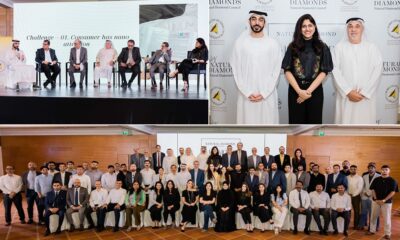
 DiamondBuzz1 hour ago
DiamondBuzz1 hour agoNatural Diamond Council and Dubai Jewellery Group Host a Successful ‘The Diamond Dialogue’ in Dubai








